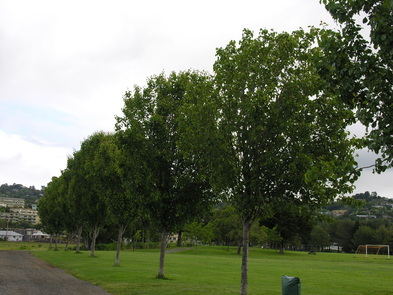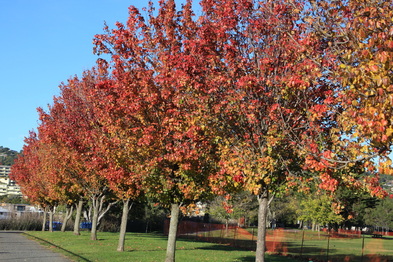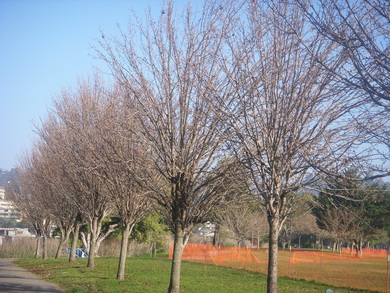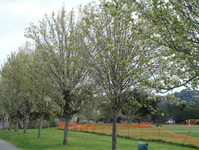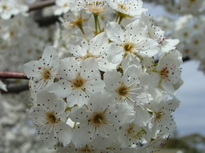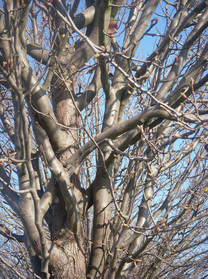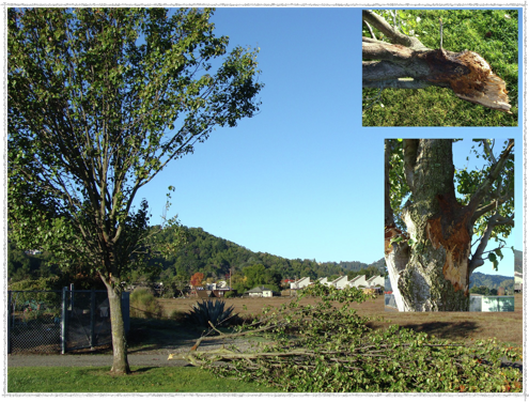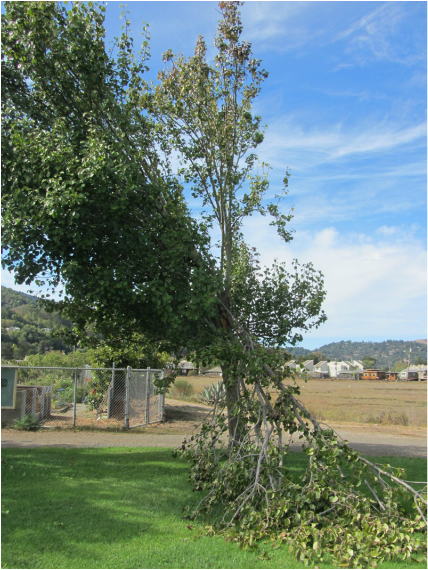Callery pear, although belonging to the same genus as edible pear, produces tiny, inedible fruit and is grown for ornamental qualities which include glossy green leaves, white flowers in the spring and various shades of fall color. It is a deciduous species, native to China and Korea and can be expected to reach 40-50 ft.
Most species in the genus Pyrus naturally develop a dense branching pattern with narrow angles of attachment. For fruiting varieties, severe pruning alters the natural branching pattern to one that maximizes fruit production while creating branches that will bear the weight of the fruit. The ornamental callery pears are often left to grow as they will (as in the above photos) resulting in a mishmash of crowding branches which, as they grow in diameter, become structurally unsound and often result in failure. Some cultivars such as ‘Aristocrat’ are reputed to have a stronger branching pattern, but all pear varieties and cultivars can benefit from structural pruning when young.
Most species in the genus Pyrus naturally develop a dense branching pattern with narrow angles of attachment. For fruiting varieties, severe pruning alters the natural branching pattern to one that maximizes fruit production while creating branches that will bear the weight of the fruit. The ornamental callery pears are often left to grow as they will (as in the above photos) resulting in a mishmash of crowding branches which, as they grow in diameter, become structurally unsound and often result in failure. Some cultivars such as ‘Aristocrat’ are reputed to have a stronger branching pattern, but all pear varieties and cultivars can benefit from structural pruning when young.
On a stormy day in November 2009, a large,weakly attached branch on the tree at the north end of the row failed in the typical way of callery pears.
